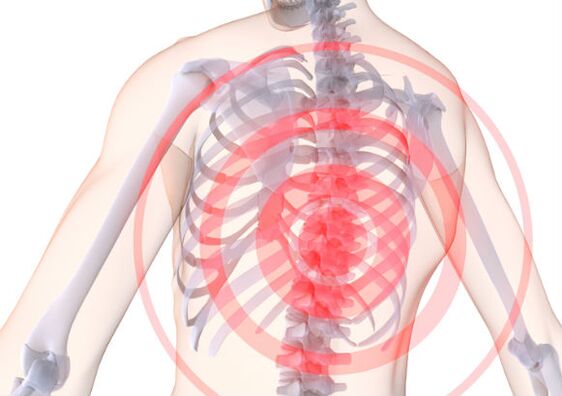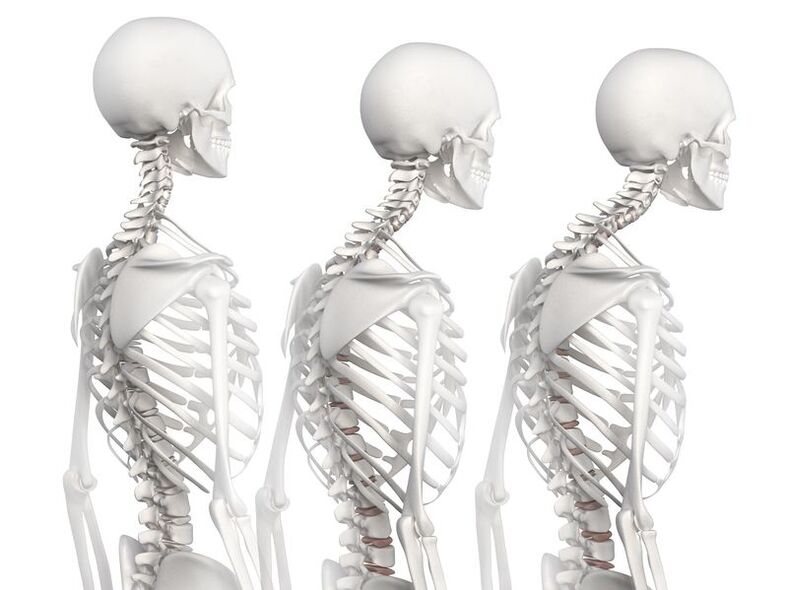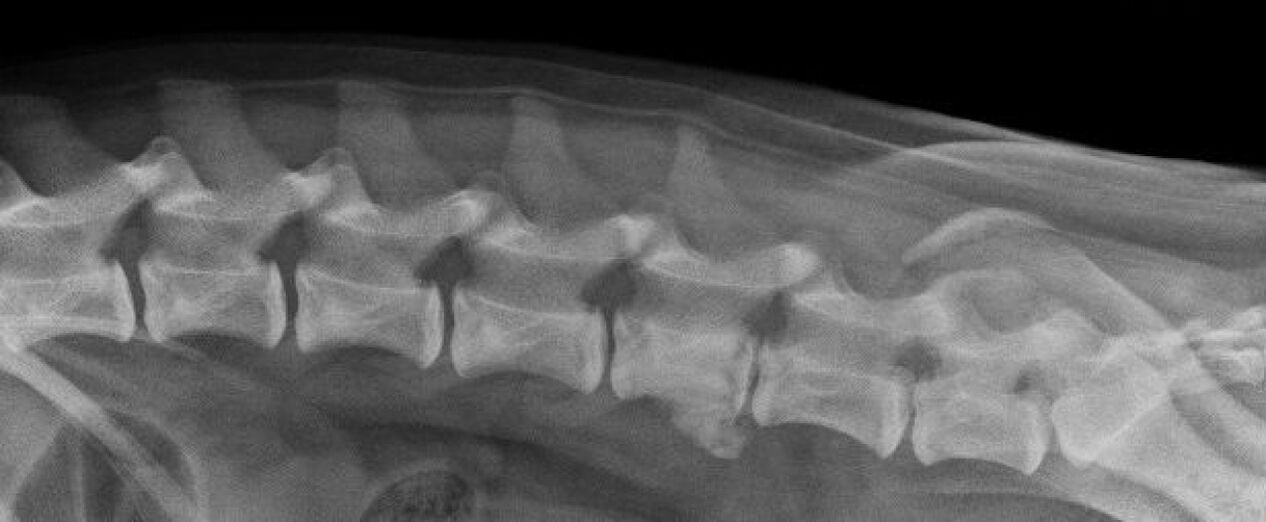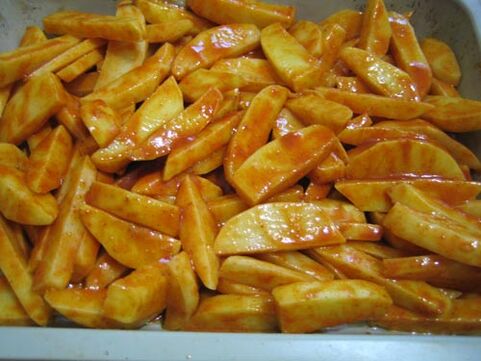Osteonecrosis of the thoracic spine is an inflammatory disease that is accompanied by the development of pathological processes in the intervertebral disc. Complications of the disease include the appearance of protruding and degenerative changes in adjacent tissues. Chondrolysis is difficult to identify due to "masking" symptoms such as gastritis, heart disease or stomach ulcers.
Characteristics of the disease
Thoracic osteonecrosis is a complex disorder of the intervertebral discs. They shrink and gradually lose their properties. This leads to nerve compression.

According to ICD-10, this disease belongs to the group "Dorsopathy" code M-42, localized.
In the early stages of the disease, examination and treatment may be prescribed by a local doctor. If the disease progresses, the patient is referred to a highly qualified specialist (neurologist). Typically, a professional massage therapist will relieve the patient's symptoms of thoracic osteoarthritis. In case of complications, you cannot do without the help of a surgeon.
reason
Usually, the disease manifests itself in the elderly. But in recent years, thoracic osteochondrosis has more commonly affected younger patients.

The development of the disease is provoked by many reasons:
- excessive physical activity;
- work that involves lifting heavy objects;
- Uncomfortable positions force stretching;
- congenital curvature of the spine and acquired postural disorders;
- improper diet;
- overweight;
- age-related changes;
- metabolic problems.
Other factors that lead to the development of cartilage degeneration in the chest area include chronic diseases and genetic factors. To avoid pathology and possible complications, you need to eliminate the cause. Experts say that this problem in most cases is the result of an unhealthy lifestyle.
Levels and symptoms
Thoracic osteonecrosis is characterized by distinctive symptoms. The patient has muscle spasms and intercostal neuralgia. The pain may be localized in one place on the chest, then quickly spread throughout the chest. Because of this, a person has difficulty breathing, he only has to sit or lie in a certain position.
The pain increases when turning the head, moving the neck, raising arms and bending down. Any movement of the neck causes discomfort (especially at night). Painful spasms of the shoulder and lower back muscles may occur.

Considering the degree of deformation of the intervertebral disc, the following levels of development are distinguished:
First level
In the early stages, the elasticity (hardness) of the intervertebral discs and their height decrease. There may be protrusion (bulging) of the annulus fibrosus (hard shell to semi-fluid core). The cartilaginous tissue of the vertebrae becomes denser. Pain in the form of "low back pain" can occur with sudden movements or after being in one position for a long time.
Dorsago- a characteristic symptom at this stage. Manifested by acute, sudden pain in the chest. It usually appears when a person stands up (dyspnea).
Back-ache- Mild pain, no pain. Appears gradually and usually lasts 2 to 3 weeks. It may get worse with sudden bending or after exertion. Back pain is accompanied by muscle tension and limited movement. The pain subsides after a short walk.
Also at this stage, neurological symptoms are identified:
- "pins and needles" feeling on the surface of the legs, abdomen and chest;
- numbness or tingling in some areas of the skin;
- functional disorders of the gastrointestinal tract.
Second level
The height and elasticity of the disc continue to decrease. The thoracic spine becomes unstable, cracks appear in the annulus fibrosus.
Feeling of pain:
- in the chest after overwork or physical exertion;
- in the upper back;
- when raising your hand;
- when breathing (inhale and exhale).
Phantom pain in the heart area and intestinal dysfunction may also occur.
Third degree
Intervertebral hernia formation continues. Feeling pain in the abdomen and back, intercostal neuralgia (may increase with inhalation, sudden movements and coughing).
One of the symptoms of osteonecrosis is cough. The overall mobility of the spine is reduced, the diaphragm is compressed and there is a feeling of lack of air. A severe dry cough is especially dangerous because the vertebral artery is located in the neck. If it is compressed there is a risk of ischemia and stroke.
Fourth degree
In the fourth stage, the intervertebral discs stop acting as shock absorbers. The spine loses mobility. May compress blood vessels and nerves. Bone tissue is easily destroyed.
Diagnose
Thoracic osteochondrosis is difficult to diagnose because it has symptoms that "disguise" (are similar) to other diseases.

To make an accurate diagnosis, you need to conduct some research:
- Supersonic;
- X ray;
- MRI;
- blood analysis.
Traditional treatment
To eliminate pain and inflammation in the chest, people use drug treatment. To relieve pain during an exacerbation, people inject drugs intravenously or intramuscularly. Treatment of osteoarthritis occurs with the help of drugs containing enzymes of plant origin - papain. This substance helps improve the structure of cartilage tissue.
- Chondroprotectors. This is a group of drugs used to restore joint cartilage. The basis of most products are active ingredients - glucosamine and chondroitin sulfate.
- Antispasmodics and muscle relaxants.The drug weakens muscle tone. By acting on receptors in this way, they reduce unhealthy muscle tension, which leads to pain and spasms.
- Analgesic.Reduces symptoms of the disease - inflammation and pain. The principle of action of these drugs is to block the synthesis of certain enzymes.
- Vitamin therapy.Usually, vitamins A, B, D, C, E are prescribed to restore cartilage tissue, strengthen the immune system and have an anti-inflammatory effect.
- Massage.Patients with this disease need to undergo a restorative massage at least 2 times a year. During periods of exacerbation of the disease, the procedure is usually not performed. This procedure improves blood circulation, reduces fatigue and muscle pain, and increases muscle tone. The session lasts a quarter of an hour, the course duration is 11-16 procedures.
- Reflexology.Special techniques work on acupuncture points. Combined with other methods, this method is effective.
- Exercise therapy.The disease is characterized by underdeveloped Corset muscles and stiffness. A specially selected set of exercises (physical therapy) will help eliminate these manifestations. The first classes should be carried out under the supervision of an experienced instructor, then gymnastics is performed independently. Regular training is of great importance.
Treatment at home
Home methods are used only as an additional means to the main conservative therapy:
- Nutrition
To improve your condition, you need to eat properly: 6-7 meals a day, reduce salt intake, add vegetables and fruits, natural protective substances (jelly, jelly meat) to your diet. In addition, it is important to lead an active lifestyle, avoiding any form of overload.
- Strawberry tea
Osteoarthritis of the chest can be reduced by systematically drinking berry tea, as well as tea from strawberry leaves. Place a spoonful of the plant in a glass, add hot water and brew. It is recommended to drink at least two glasses of this drink per day (after meals).
- Potatoes and honey
Mashed potatoes mixed with liquid honey can relieve pain and reduce inflammation. The composition is applied to the painful part for 30 minutes.

Control your weight, strengthen your body's defenses and add more plant foods to your diet. If the presented recommendations are followed, the therapeutic effect will occur faster, the risk of complications and remission will decrease.







































